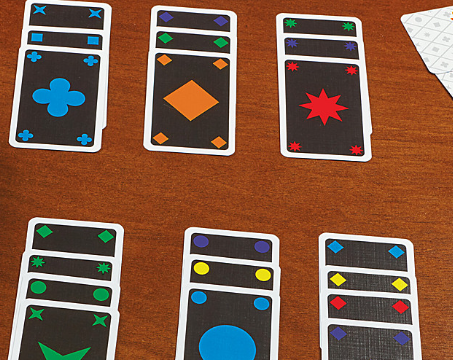rewards zyn

sugar rush
# 10 Card Rummy
## Introduction to 10 Card Rummy
p: Rummy is a classic card game that has captivated players around the globe for centuries. Among its many variants, 10 Card Rummy stands out for its straightforward rules and engaging gameplay. This version allows players to skillfully meld their cards into sets and sequences, offering a delightful experience for both casual players and seasoned rummy enthusiasts. In this article, we will explore the rules, strategies, and tips for mastering 10 Card Rummy, as well as its variations and the appeal it holds for different audiences.
## The Basics of 10 Card Rummy
p: 10 Card Rummy is played with a standard 52-card deck and involves two or more players. Each player is dealt ten cards, and the objective is to create valid combinations of cards known as "melds." A meld can either be a set (three or four cards of the same rank) or a sequence (three or more cards in consecutive rank order). The game starts with players taking turns to draw cards from a face-up pile or the deck, with the end goal of laying down all their cards by forming valid melds.
## The Setup
p: To prepare for a game of 10 Card Rummy, players need to gather a standard deck of 52 playing cards. Shuffle the deck thoroughly to ensure randomness and then deal ten cards to each player. The remaining cards form the draw pile, placed face down in the center, with the top card turned face up next to it to start the discard pile. Understanding the card values is essential; in this game, cards rank from Ace (1) to King (13), with the suit being irrelevant to the melding process.
## Objective of the Game
p: The main objective in 10 Card Rummy is to be the first player to form valid melds with all ten of your cards. To declare a win, a player must lay down their melds on the table and discard their last card. The game typically has multiple rounds, and players can accumulate points based on the cards remaining in their opponents' hands when one player successfully melds all their cards.
## Understanding the Card Values
p: In 10 Card Rummy, different cards have varying values, which play a crucial role in scoring. Number cards (2 to 10) hold their face value, while Jacks, Queens, and Kings are valued at 10 points each. Aces can either be valued at 1 point, when used in a low sequence (Ace, 2, 3), or 11 points when part of a high sequence (10, Jack, Queen, King, Ace). Understanding these values can help players strategize effectively and minimize their score when attempting to block opponents from winning.
## How to Play: The Turn Process
p: Each round of 10 Card Rummy follows a structured turn process. On a player's turn, they begin by drawing a card from either the draw pile or the discard pile. This is followed by the player attempting to form melds with their hand. If they can lay down valid melds, they may do so in front of them. Regardless of whether they meld or not, every turn concludes with the player discarding one card, which adds to the strategic component of the game. Players must be cautious about what cards they discard, as doing so may inadvertently assist their opponents in forming their melds.
## Forming Sets and Sequences
p: The heart of 10 Card Rummy lies in forming valid melds. A set consists of three or four cards of the same rank (e.g., three Kings or four 7s), while a sequence comprises three or more consecutive cards of the same suit (e.g., 4, 5, 6 of hearts). Players should focus on forming these combinations while keeping track of the cards they and their opponents draw and discard. The flexibility of Aces as both high and low cards can be advantageous in completing sequences.
## Strategies for Success
p: To excel at 10 Card Rummy, players can employ several strategies that enhance their chances of winning. First, keeping a close eye on the cards opponents pick up and discard provides valuable insights into their potential melds. Players should also consider holding onto cards that could be useful for opponents while taking steps to minimize their own point value. Furthermore, balancing aggressive play with defensive strategies can create a dynamic that keeps other players off-balance.
## Advanced Tactics: Bluffs and Decoys
p: Experienced players may choose to implement advanced tactics such as bluffing and using decoys. By discarding cards that they appear to need, they can mislead opponents about their intentions. For instance, if a player discards a 5 of hearts, they may be trying to convey that they are not focusing on developing a run involving hearts. This tactic can divert opponents' attention and lead to mistakes in their gameplay, ultimately opening up opportunities for the bluffer.
## Common Mistakes to Avoid
p: While learning to master 10 Card Rummy, players may fall prey to some common mistakes. One pitfall is not keeping track of the cards that have been played, which can lead to poor decision-making. Additionally, overly aggressive play can backfire, especially if players discard cards that are crucial for opponents' melds. Lastly, failing to discard strategically diminishes the chances of winning. Players should constantly evaluate their hand, opponents’ hands, and adjust their strategy accordingly.
## Scoring and Winning
p: In 10 Card Rummy, scoring occurs at the end of each round. If a player successfully melds all their cards, their opponents must reveal their remaining cards, with each card contributing to the total score based on its value. The overall goal is to accumulate the lowest score possible over several rounds, making the game a mix of skill and luck. Players can choose to play a predetermined number of rounds or continue until someone reaches a specific score threshold.
## Variations of 10 Card Rummy
p: While the traditional rules of 10 Card Rummy apply broadly, several variations have emerged, each with its unique twist. These include changes in the number of cards dealt, the inclusion of jokers that act as wild cards, and different scoring systems. Each variation introduces new dynamics, challenging players to adapt their strategies. Players are encouraged to explore these versions to find the one that best suits their preferences and skill levels.
## The Social Aspect of Rummy
p: Beyond the mechanics of the game, 10 Card Rummy fosters social interaction and camaraderie among players. The game's competitive nature encourages conversation, laughter, and friendly banter, making it a popular choice for gatherings and family game nights. Whether played in living rooms or at parties, rummy creates memorable experiences and deepens relationships through shared moments of challenge and triumph.
## Digital Rummy: Playing Online
p: As technology advances, the allure of card games like 10 Card Rummy has transcended physical boundaries, making its way into the digital world. Online platforms allow players to engage in rummy against opponents from around the globe, offering convenience and accessibility. These digital versions often boast tutorials for beginners, live multiplayer experiences, and competitive tournaments, enriching the player community and popularizing the game even further.
## Conclusion
p: In summary, 10 Card Rummy is a captivating game that balances strategy, luck, and social interaction. With its easy-to-follow rules and engaging gameplay, it appeals to a wide audience, from casual players to avid card enthusiasts. By mastering the various aspects of the game—rules, strategies, and social dynamics—players can elevate their rummy skills and enjoy countless hours of entertainment. Whether played traditionally with friends or online, 10 Card Rummy remains a timeless classic, ensuring its place in the hearts of card game lovers for generations to come.
cocktail flow,seventeen light stick,zinga poker
earn money online,temi



